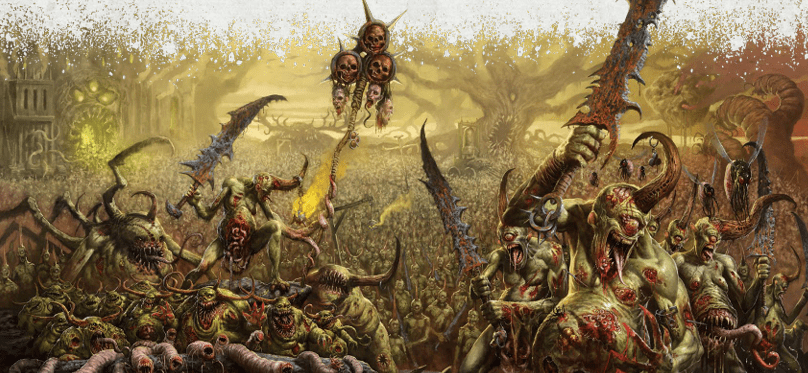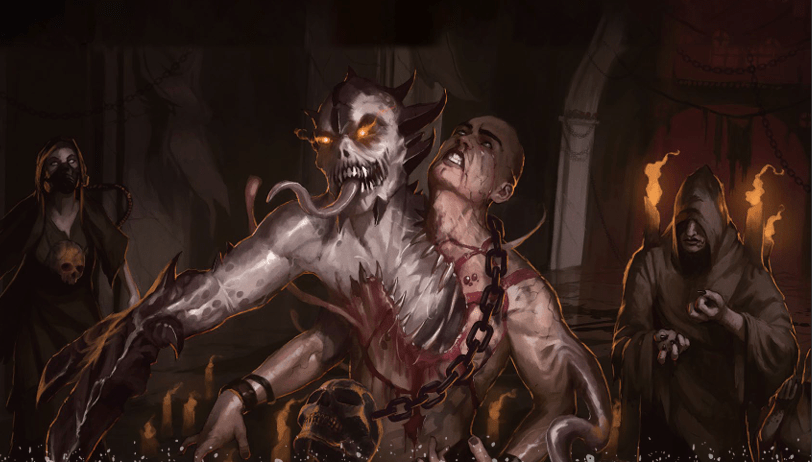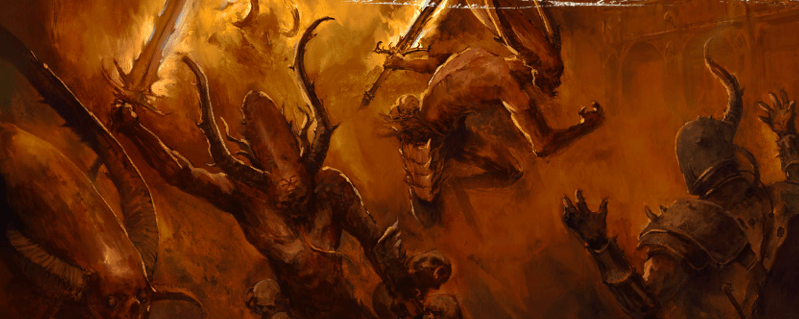Forget Hitchhiker's, this is the Guide you need.
Review by GM Brad

When I first became enamored with 40k, the Inquisition was not even on my radar. It wasn’t until I discovered the Gaunt’s Ghosts novels shortly thereafter that I was able to fully wrap my head around the lore, the machinations of the Imperium, and see what a ruthless entity the Inquisition could be. Until recently, my only exposure to the Inquisition was Dan Abnett’s writing of Inquisitor Golesh Heldane in First and Only, which I first read as a teen.
Fast forward twenty years and drop Warhammer 40,000 Roleplay: Imperium Maledictum in my lap, and here I am as a GM trying to download every ounce of information and nuance of the Inquisition into my brain to bring The Tainted Hive to life for my players. After a few years away from the IP, I had to not only get up to speed on all of the new aspects of the IP and story (hello, Noctis Aeterna) but also learn as much as I could about Inquisitorial nuance. As a GM, I prefer to paint the large picture, to make my players feel like the world we play in is truly living, breathing, and that their actions have consquences. While the Imperium Maledictum Core Rulebook and the Chemical Burn scenario both helped set my brain, I found myself constantly wanting more.
Enter The Inquisition GM’s Guide. I am just going to come out and say this at the start – this is the best release for Imperium Maledictum yet. Normally, I prefer to give you the full breakdown of the newest release, some snippets and overview of what you could be getting yourself access to, but if you’ve made it this far and were just looking for affirmation that this was a good addition to your Imperium Maledictum collection, stop reading, follow this link and go snag your copy. It is that good.
"By an Inquisitor's words alone, thousands have perished in a moment."
At the highest of levels, this guide gives GM’s a significant leg up on running a game with an Inquisition focus. Whether you’re new to 40k, or just new to GMing, there are tools here that benefit every level of experience and IP knowledge. With overviews of the Three Holy Ordos (Xenos, Malleus, Hereticus), those new to the IP can get a better grasp of the level of power and the threats to humanity’s existence that the Inquisition face. Within the guide is a wealth of information on the fourteen different philosophical perspectives of Inquisitors. Even as someone who is fairly well versed in 40k lore, this was new knowledge that will only help me better present the nuance of the Inquisition to my players in future games.
That, perhaps, is the greatest boon of this guide. For those not well versed in the Inquisition, it can be easy to fall into the tropes and stereotypes, to make the Inquisition as a whole feel too flat and one-dimensional. In reality, as this guide presents, the Inquisitors are as varied as the millions of world inhabited by the Imperium, and the details within can help make each of your NPCs feel unique.


From philosophical differences to the focus on their duty and ambition, the Inquisition GM’s Guide has a wealth of resources for better roleplaying your Inquisition NPCs. Knowing how to roleplay and Inquisitor or one of their Interrogators is not enough to make an enticing game, however. Enthralling games need hints, clues, items that the party can uncover in their investigation that feel impactful and earned. There is no worse feeling for a player than realizing their hard work and investigation isn’t succeeding, or in feeling like the GM just gave them the results.
The second section within this guide can help all GM’s, from the lowly acolyte to the Inquisitorial Lord, run better Inquisition based adventures. With tips on setting up the story, running the investigations, using superiority and the new subtlety mechanic, as well as brief overviews of the signs of xenos and heretics, this single section can help take your game to the next level for your players.
Good Inquisition adventures aren’t normally solved with bolter rounds and chain weapons, but this is Warhammer…so it is safe to assume at some point violence is likely. That said, a good party can leverage their contacts to avoid these situations until ideal for them, and the Inquisition GM’s Guide has a whole section with tips and rules for your party to find, manage, and even create contacts. It also has ten unique, pre-created contacts for your use within your games – and what GM doesn’t love resources made for them?

Threats to the Inquisition, or Adventures for your party?
Perhaps the greatest piece of this book, and what cemented it in my mind as an absolute must buy, is the inclusion of the framework for a seven part campaign called “The Heresies Macharia”. I’ll keep it high level here, so as to avoid spoilers for non-GMs. This section totaling 36 pages, covers the rules and details on how to run the Inquisitorial Conclaves of the Macharian Sector, the gathering of the some of the most powerful people in the sector and the politicking that takes place amongst colleagues of the Inquisition. Further, it gives your party seven different conclaves to attend alongside their Inquisitorial Patron, and with three potential missions for the party to set off on, it seems to blend rogue-like aspects of games like X-Com or Warhammer 40,000: Chaos Gate. No two parties will likely have the exact same outcome of this campaign, and what I love most about it is the freedom it gives the GM to make the missions their own. There are no strict parameters for the different missions (called “Strifes”) per conclave, just a bit of background, some information on the operation in question and the key players, and the potential outcomes. The entire middle, the “guts” of the Strife, are open to the GM to create, giving this framework huge potential.
As if that was not enough, there are also five “Open Case Files” for short scenarios/adventures that can be added to a larger campaign or played as a one-off. Each have their merits and could serve to support a campaign – or serve as a jumping off point! The guide also includes 22 pages on the Sector Threats, covering everything from the Dark Eldar (sorry, I mean Drukhari) to the Leagues of Votann, giving a bit of story on why so many different factions from the IP may be involved within the sector.
Last, but certainly not least, the Bestiary….I love me my monsters. With new Daemon and chaos enemies, Traitor Guard, and even Kroot, this bestiary is a solid (if brief) addition for GM’s. If there is any criticism, it is here. Cubicle 7 did a great job scattering some additional NPC stat blocks for each of the “Sector Threats”, including Nurgle Poxwalkers. However, that does mean that for GMs looking for these blocks at a later date we need to remember which of the threats they are associated with – and which book they may be in. While Imperium Maledictum is young, I can see the expansive potential for growth, and the sheer mass of information that can be coming towards GMs. My only piece of feedback would be that, despite being duplicated, include the NPC stat blocks that are within these tomes and within a specific relevant section again in the bestiary at the end – it makes a GMs life easier.
Overall, the Inquisition GMs Guide is rated a 9.2/10, and is a must buy. This is easily the best release for Imperium Maledictum to date, and the Collectors Edition is stunning. You can purchase your copy HERE.
Product received for free for review. Linked products within this article do not carry any financial contribution to Dead Suns Company, but do help us continue to review products for Cubicle 7.


